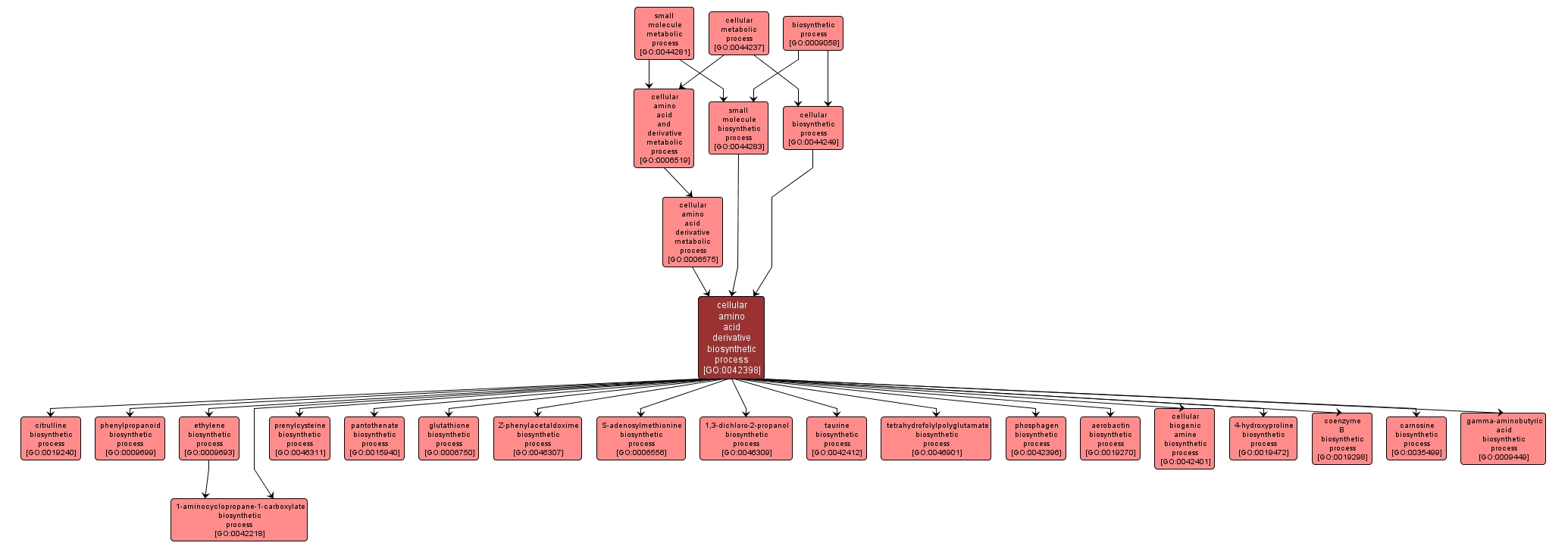GO TERM SUMMARY
|
| Name: |
cellular amino acid derivative biosynthetic process |
| Acc: |
GO:0042398 |
| Aspect: |
Biological Process |
| Desc: |
The chemical reactions and pathways resulting in the formation of compounds derived from amino acids, organic acids containing one or more amino substituents. |
Synonyms:
- amino acid derivative biosynthetic process
- cellular amino acid derivative formation
- cellular amino acid derivative biosynthesis
- cellular amino acid derivative synthesis
- cellular amino acid derivative anabolism
|
|

|
INTERACTIVE GO GRAPH
|














